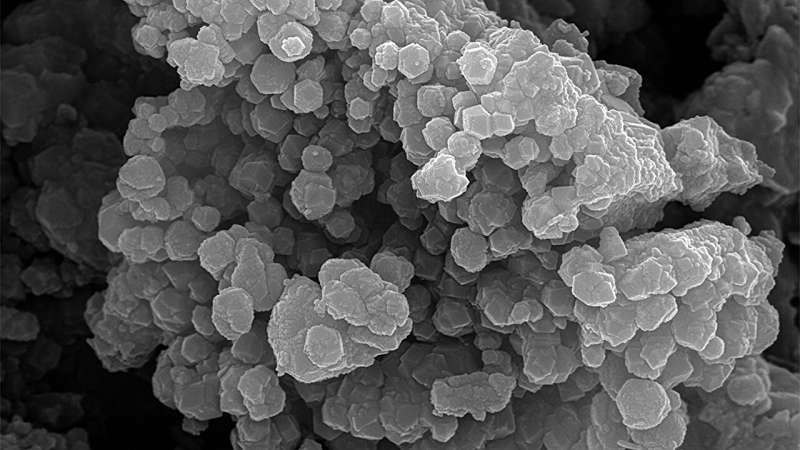This article has been reviewed according to Science X's editorial process and policies. Editors have highlighted the following attributes while ensuring the content's credibility:
fact-checked
peer-reviewed publication
trusted source
proofread
Microbes likely form magnetite in the South China Sea

Magnetite, the most magnetic mineral on Earth, is increasingly being found in seafloor environments that are rich in iron and have high methane flux. But how it forms in such settings—whether by microbes that thrive near methane seeps or by processes that don't require life—is not entirely clear.
Knowing the source of seafloor magnetic signals helps scientists interpret magnetic records of the ancient sea, which can hold clues about tectonic activity, the timing of Earth's pole reversals, and other environmental changes through geologic time.
In 2014, Zhiyong Lin and colleagues took two sediment cores from an area of the northern South China Sea where methane seepage from underwater formations such as mud volcanoes and gas chimneys is common. The team looked at magnetic, mineralogical, geochemical, and genomic properties of the cores to determine the source of magnetite formation in the region.
The researchers observed layers with abundant fine-grained magnetite crystals, which they say probably formed in an iron-rich environment because these layers also had high levels of iron overall. Gene sequencing confirmed the presence of methane-producing microbes such as Methanosarcina and Methanocella in these sediment layers as well.
The team suspects that these microbes can reduce iron for energy, which triggers the formation of magnetite. In contrast, sediment layers in the cores that were richer in pyrite but low in magnetite and iron overall suggested past activity of methane-oxidizing microbes.
From their findings, now published in the Journal of Geophysical Research: Solid Earth, the researchers conclude that magnetite found in the floor of the South China Sea likely formed by microbial iron reduction, rather than by an abiotic process.
More information: Zhiyong Lin et al, Methanogenic Archaea as Catalysts for Magnetite Formation in Iron‐Rich Marine Sediments, Journal of Geophysical Research: Solid Earth (2024). DOI: 10.1029/2023JB028312
Journal information: Journal of Geophysical Research: Solid Earth
Provided by American Geophysical Union
This story is republished courtesy of Eos, hosted by the American Geophysical Union. Read the original story here.





















